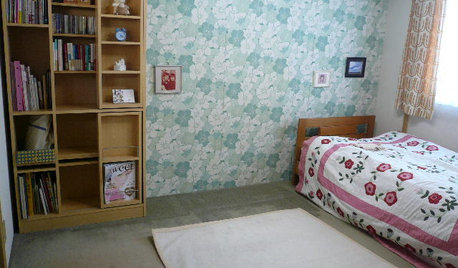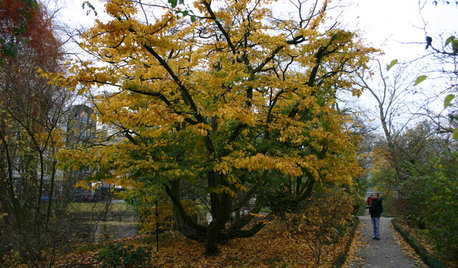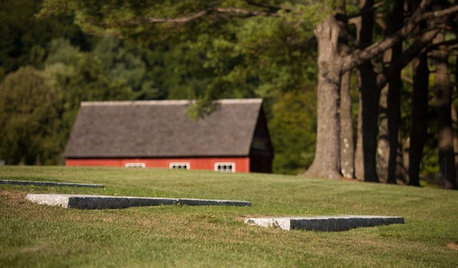Sawdust results in Garden
General
11 years ago
Featured Answer
Sort by:Oldest
Comments (49)
rhizo_1 (North AL) zone 7
11 years agoemgardener
11 years agoRelated Discussions
Container Garden Experiment Results (Yield per container
Comments (7)I did use Miracle Grow fertilizer at first, but then I switched over to Tomato Tone and I liked it a lot better. For one thing, the Tomato Tone seemed to lead to a massive growth spurt. Also, (I'm not sure if this was due to the Tomato Tone or not) but when I started using Tomato Tone the problems with Blossom End Rot pretty much went away. I was losing peppers and tomatoes left and right before that. As far as the dirt, I used the Sta Green primarily because it was relatively light (we live in an upstairs apartment so it all has to go out on the porch) and seemed to have a good consistency. I liked the results, so I will probably use it again this year....See MoreNew gardener, new seeds, strange result
Comments (14)Ok, here's my solicited opinion, based on personal experience and gut instinct, not necessarily scientific. I don't like them for several reasons. They take a long time to fully expand, more so than just a hydropobic soil. Usually triple-watering is necessary to fully hydrate. They give people, especially those like my Mom with hit-or-miss watering practices a false sense of security. I don't think anything that expands and contracts like that is a good thing in a pot where every square inch should be devoted to something beneficial. They never go away and will eventually find their way into your yard, a landfill or municipal compost. And I just don't like anything that is not normal to the area. Maybe I'm old-fashioned or stuck in the past but I don't "do" perlite, water crystals, vermiculite, peat. There's no way something in a package could be better or even as good as what mother nature provides. (Unless, of course, it's a package of compost or mulch, stuff like that.)...See MoreMontreal Botanical Garden trial results
Comments (13)Those that know can help you grow. And as is so often reiterated here, those with experience in a similar climate will provide the best input. I recommend Anne, annececilia. How I'd love to read lengthy detailed reports on ALL of her roses! Climbers: http://forums2.gardenweb.com/forums/load/roses/con0815551515838.html http://forums2.gardenweb.com/forums/load/rosesant/msg0621533929369.html Bucks: http://forums2.gardenweb.com/forums/load/roses/msg010004337472.html http://forums2.gardenweb.com/forums/load/roses/msg011855218300.html Easy Elegance: http://forums2.gardenweb.com/forums/load/roses/msg0917005611209.html On rugosas: http://forums2.gardenweb.com/forums/load/rosesant/msg0101585223240.html On the rather rare: http://forums2.gardenweb.com/forums/load/rosesant/msg0120013810670.html http://forums2.gardenweb.com/forums/load/rosesant/msg0410005912156.html Reading Material (remember zone 4 isn't just where you are): http://forums.gardenweb.com/forums/load/grtlks/msg012313103472.html General: http://forums2.gardenweb.com/forums/load/roses/msg0714563528571.html Hope this helps too. Best of luck, Chris...See MoreGoogle search results for gardening sites going wrong
Comments (1)What are you suggesting is the reason for the change in Google search results? I am a webmaster for several nonprofit sites and have tried to keep track of these kinds of things. What I have learned is that search results are different for different users depending on their history of searching Google, geographic location and nature of the search. There is no set place a particular website will appear on a Google search. I get different search results if I am at work than I do when I am at home or on vacation....See Morerickd59
11 years agoRpR_
11 years agofairfield8619
11 years agoRpR_
11 years agoLloyd
11 years agoluckygal
11 years agoGeneral
11 years agoRpR_
11 years agojonfrum
11 years agofairfield8619
11 years agoLloyd
11 years agodottyinduncan
11 years agowayne_5 zone 6a Central Indiana
11 years agofairfield8619
11 years agostrobiculate
11 years agoGeneral
11 years agoLloyd
11 years agofairfield8619
11 years agoLloyd
11 years agotoxcrusadr
11 years agoLloyd
11 years agoluckygal
11 years agotoxcrusadr
11 years agowayne_5 zone 6a Central Indiana
11 years agoLloyd
11 years agoGeneral
11 years ago2ajsmama
11 years agoDalmatian
11 years agoemgardener
11 years agojaf1953
10 years agopaleogardener
10 years agopnbrown
10 years agojaf1953
10 years agotoxcrusadr
10 years agojosko021
7 years agotoxcrusadr
7 years agojosko021
7 years agokimmq
7 years agojosko021
7 years agotoxcrusadr
7 years agojosko021
7 years agoharry757
7 years agojosko021
7 years agolast modified: 7 years agoDavid Victor
6 years agotoxcrusadr
6 years ago
Related Stories

BOOKSCan Tidying Up Result in Life-Changing Magic?
Organizing phenom Marie Kondo promises big results — if you embrace enormous changes and tough choices
Full Story
REMODELING GUIDESHouzz Survey Results: Remodeling Likely to Trump Selling in 2014
Most homeowners say they’re staying put for now, and investing in features to help them live better and love their homes more
Full Story
RANCH HOMESHouzz Tour: Ranch House Changes Yield Big Results
An architect helps homeowners add features, including a new kitchen, that make their Minnesota home feel just right
Full Story
GARDENING GUIDESThe Beauty of Bare-Root Plants
Plant dormant trees and shrubs in fall using the easy, affordable bare-root method and enjoy beautiful results in spring
Full Story
GARDENING GUIDESGreat Design Plant: Grow Blueberries for Their Fruit and More
Eastern gardeners should consider growing blueberry plants for their delicious fruits, bee-friendly spring blooms and brilliant fall foliage
Full Story
GARDENING GUIDESGreat Design Plant: Knock Out Roses
As glorious as their high-maintenance kin for a fraction of the work, Knock Out roses make even beginners look like garden stars
Full Story
GARDENING GUIDESGreat Design Plant: Milkweed
Quit cringing. This not-weed plant is a sight to behold in the garden, has a delicious vanilla scent and is a magnet for butterflies
Full Story
GARDENING AND LANDSCAPINGGreat Design Tree: Persian Ironwood
Plant this unusual deciduous stunner for seasonal interest year-round
Full Story
PLANTING IDEASGreat Garden Combo: Rose + Clematis for Small-Space Impact
We all need somebody to lean on. And when a rose supports a climbing vine, the results can totally transform a small garden
Full Story
LANDSCAPE DESIGNProblem Solving With the Pros: Rustic Simplicity in a Country Garden
Editing thoughtfully and adding some magic result in a timeless weekend retreat
Full Story


toxcrusadr